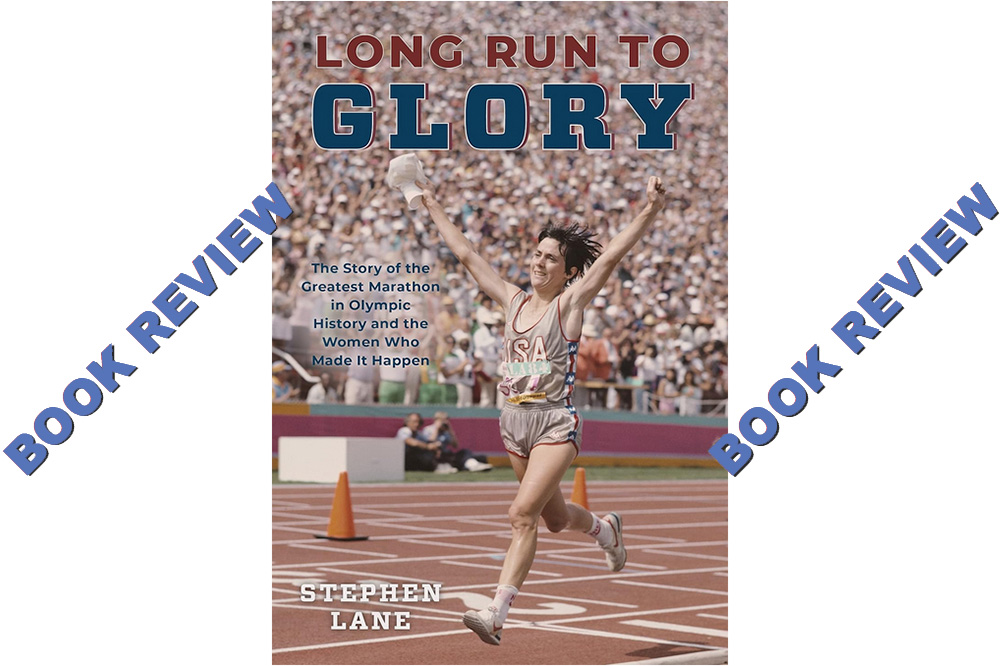
STEPHEN LANE, you’ve written a fine book. Long Run to Glory covers ground very familiar to any veteran fan of track & field, but it tells the story very well and with authority.
The centerpiece of the book is, first, the struggle to get the women’s marathon included in the Olympic program, and then the dramatic account of the first women’s Olympic 26 miler—in LA in 1984, with a storybook American heroine, Joan Benoit Samuelson. She crossed the finish line in that ill-fitting U.S. gray uniform, several minutes ahead of Grete Waitz, one of history’s greatest marathoners, through the heat and smog of Southern California, and recorded one of the fastest-ever marathon times to that point.
But there are several subtopics connected to women’s distance running in the book. There are the first attempts by women to compete in the Boston Marathon; there are the pioneers: Roberta Gibb, Kathy Switzer, Nina Kuscsik, Jackie Hansen; there is Fred Lebow and the creation and development of the New York Marathon (won nine times by Waitz). And there are detailed stories of the four dominant women marathoners of the 70’s and 80’s: Benoit (who married Scott Samuelson shortly after the Games), Waitz, Ingrid Kristiansen, and Rosa Mota — all American or European. (Things have changed, of course. In the last three Olympics, 7 of the 9 women’s marathon medals went to citizens or emigrants from East African nations.)
The efforts to get hidebound officialdom to wake up to the reality that women could survive and even thrive at marathon running is handled admirably by Lane, who himself is a race director and coach. Switzer and Hansen worked tirelessly and deserve much of the credit, but it’s obvious that with so much money coming into the sport, from Nike, Avon, and others, the IOC had to take notice.
As mentioned, this is all familiar territory. But Benoit’s Olympic year is well worth recalling. First, there was the knee injury. Would she be able to compete in the upcoming Olympic Trials Marathon? The doctors claimed they could not tell the source of the problem without surgery, but that would definitely keep her out of the Trials. Did the experimental electrical stimulation help? Maybe. Whatever, the pain had subsided sufficiently to allow her to start, and she won the race handily.
And then there was the Olympic race itself, with all the runners spooked somewhat by Los Angeles’ heat and poor air quality. You’ll recall the rest. Benoit moving to a significant lead just 4km into the contest, and gradually increasing it to 1:30, and more. Waitz, Mota, Kristiansen, Julie Brown all followed, and a chase-down never came.
My favorite snippet at race’s end: Shoppers at L.L. Bean in Freeport, Maine, were treated to an announcement that hometown girl Joan Benoit had just won the first Olympic women’s marathon. The shoppers roared with joy and everyone applauded; then continued shopping.
Long Run to Glory: The Story of the Greatest Marathon in Olympic History and the Women Who Made It Happen by Stephen Lane is published by Lyons Press. The list price is $29.95 (hard cover). It’s available in bookstores and from online retailers including Amazon.
